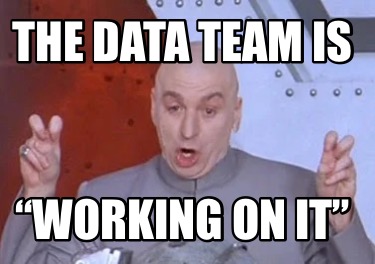There is a revolution in organisational design development brewing in the data industry. Borrowing from the same mantra of ‘decentralisation’ that has sparked innovation in blockchain technology and Web3, “Data Mesh” is the new kid on the block that has caused a stir amongst data evangelists and business thinkers alike.
The thinking behind Data Mesh is very appealing. By distributing capabilities into clearly defined data products and leveraging best practices in technology delivery, teams are empowered to take ownership over their data and realise the dream of self-service analytics. This is not only a business imperative for technology leaders looking to the future of data management, but also for all those aspiring tech gurus within an organisation that want a slice of the action.
By getting rid of an organisation’s centralised data team, individuals will be inspired to take a greater creative role and will lead to product decisions that are more data-driven and agile in nature.
This is power to the (data) people. However, it’s easy to get swept up in the new and shiny. Data Mesh is no light undertaking and the process will involve a complete re-imagination of an organisation’s practices, causing disruption and even possible resistance from within! As a good revolutionary knows, any successful challenge to the status-quo requires significant buy-in and moreover, mass organisation. The merits of Data Mesh must be evaluated against the backdrop of an organisation’s capabilities, time and resources, before any commitments are made.
Okay, so what are the potential pitfalls of Data Mesh?
For the most part, the technology to make Data Mesh a success already exists. Some may argue that a complete solution has not yet fully presented itself in the market, however this is to distract at the core of what Data Mesh is and where the problems may be. It is, first and foremost, a ‘socio-technical’ paradigm concerned with organisational change, a differentiating feature from other management strategies. This is a good time to remind ourselves of Data Mesh’s 4 main principles: domain-driven data ownership, data viewed as a product, self-service data platforms and a federated governance function.
Of course, the adoption of cloud storage, data lakes, management and analytical tools go hand in hand with a sound implementation and whilst this is important to get right, it should be noted that Data Mesh’s driving philosophy is that of social evolution.
For this reason, the main issues that often arise from the roll-out of Data Mesh are either cultural, governance related, or managerial in nature.
How to implement data mesh

The answers may be revealing. If individuals are not aware of the pain-points that current data architectures may have, the virtues of Data Mesh will be lost on them and it’s essential that they too form part of the solution. Culture eats strategy for breakfast and if fully embraced into a concise, long-term vision for the firm, the weave of the Mesh can strengthen bonds between departments and create a more data-conscientious workforce.
Written by
Stefan Fernandes – Data Consultant
Mantas Zegeris-Kaleda – Senior Data Consultant
